By Brian Alm
Published on Egyptological, Magazine Edition 3, December 7th 2011
Introduction
Thus far we have covered the fundamental concepts and ideologies that informed the religion of ancient Egypt — cosmic order (maat), the duality of paired principles, and divine magic (heka) — and how theology explained Creation and equipped humankind with the thought and the means to preserve it. Now we need a structure for the practice of the religion, both physical and symbolic, and that leads us to the architecture of temples, temple functions and operations, and the rituals and festivals that made religion a personal experience and put the power of magic at the command of mortals.
Part 1 and Part 2 are available in our June 2011 and September 2011 editions:
Ancient Egyptian Religion, Part 1 – The Conceptual Foundations
Ancient Egyptian Religion, Part 2 – Concepts of Creation, God, and Eternity
Temple architecture
The temple was per netjer or hut netjer, “the house (or mansion) of god.” (Per is “house,” and per-aa, “the great house,” originally meant the palace, but eventually became the term for the king, “pharaoh.”) The first purpose of the temple was religious, of course. It had other purposes, too, but let’s start with its physical presence as an emblem of and testimony to its primary raison d’être.
The temple was a microcosm of the world, rich in symbolic meaning — “the junction of the human and divine worlds” (Fletcher 2009, p. 64).
An Old Kingdom pyramid complex had two temples, the valley temple for (it is believed) the mummification of the king and the mortuary temple for his ongoing cult worship. An alternative idea, expressed in Egypt and the Egyptians (Brewer/Teeter 2007, p. 182), is that “the king in his earthly form of Horus was celebrated in the valley temple, while in the mortuary temple he was venerated in his celestial aspect of Ra.” Either way, we have two temples to complete the oneness of the king, but indeed the Horus-Ra interpretation does elevate them from a functional purpose to divine duality.
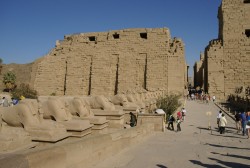
Figure 1. The temple was a microcosm of the world. The great temple of Amun at Karnak is aligned on an east-west axis, representing the daily course of the sun and the cyclical truth of regeneration. The pylons are a metaphor of the mountains through which the sun appears in the east.
The great temple of Amun at Karnak is a prime example of the temple complex as it had evolved in the New Kingdom (Figure 1). Its pylons, aligned on an east-west axis, represented the daily course of the sun and the cyclical truth of regeneration. The temple itself was a statement of duality — the paired pylons are a metaphor of the mountains through which the sun appears in the east, and resemble the hieroglyphic sign for “horizon,” akhet, the “place of becoming effective.” The western direction, of course, points toward destiny, Amentet, “the West” (the realm of the dead). Four flag poles on each pylon were topped with streamers, flags or pennants that resembled the glyph for “god,” netjer. The south-north axis of the temple paralleled the flow of the life-giving Nile and the fertile valley that gave Egypt its name, Kemet, “the black land.”
Karnak’s great hypostyle (covered) hall, formed by 134 columns with papyrus capitals, recreated the forest of plants that sprang up when order was imposed on chaos and fertile land (the Primeval Mound, benben) formed in the midst of the primordial water, Nun (Figure 2). That mound is symbolized by the pyramids and the tips (pyramidions) of pyramids and obelisks, and by the raised platform at the far extreme of the temple, which was the residence of the god, djeser-djeseru (the Holy of Holies, Greek naos, Latin sanctum sanctorum).
Let us follow an authorized high priest as he proceeds through the temple of Karnak, all the way to the sanctuary of the god Amun, in, let’s say, the 20th Dynasty. We’ll start in the first court. This is the peristyle court, flanked by colonnaded corridors and open to the sky; we are bathed in sunlight. We proceed through an imposing pair of pylons into the hypostyle hall, where it is considerably cooler and relatively dark because the ceiling is roofed and the only light comes from clerestory windows high above. We walk through this forest of stone and pass through four more pylons, the walls closing in on us as we go. As we penetrate the depths, the temple becomes dark and silent. At last we are in the presence of the god. The priest will now perform the morning ritual, and since we have no business whatsoever being here, we leave as quietly as we came. We’ll find out later what the priest was doing meanwhile.
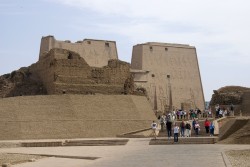
Figure 3. Remnants of the mudbrick perimeter walls of the Temple of Horus at Edfu remain, greatly eroded, but the stone structure endures.
Around the perimeter, the walls that enclosed the temples were made of undulating bands of mudbrick, recalling the waves of the primordial ocean, Nun (Figure 3). These enclosure walls established the temple as a holy place symbolically isolated from the primordial chaos, but more directly a place set apart from its secular surroundings. Just beyond this island of god was the desert — a physical metaphor of the duality: divine order imposed on chaos.
The temple complex included a sacred pool, called Ra-she, where the priests bathed three times a day to purify themselves before conducting their religious duties (Figure 4). So in that typically Egyptian way, the water itself had a dual character — it was a reminder of primordial chaos and also sacramental. The ritual empowered by sacrament put the purified in command.
Foundation Deposits: Buried Treasure
Throughout Egypt’s dynastic history, the magic of sacred places started at the very beginning with the Stretching of the Cord and subsequent ceremonies (Breaking Ground, Scattering the Sand, Placing the Stones, Dedicating the Temple to God). The Stretching of the Cord, the first step in staking out a temple, was a ritual governed by the goddess of measurement, Seshat, who was the female counterpart of Thoth, god of wisdom and writing. When the perimeter was excavated for footings, objects of all kinds — sculpture, bits of pottery, hand tools, personal items, etc. — were placed in the trench. This practice left an archeological gold mine of foundation finds, providing a view of the culture in breadth and depth — something like a cornerstone or time capsule today, but with an important difference: this act was a sacred ritual that magically endowed the buried objects with spiritual significance.
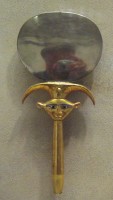
Figure 5. Objects could have symbolic or spiritual meaning. A deity’s name or image on an item gave it protective or beneficial power.
Any object could have symbolic or spiritual meaning. Simply putting a god’s name or image on a hairbrush gave it protective or beneficial power. In the July 2011 edition of Egyptological, Barbara O’Neill had a fascinating article about the hand mirrors used by Egyptian women, which were commonly decorated with the image of Hathor, goddess of feminine beauty and grace (Figure 5). So an item as simple and seemingly unimportant as a hairbrush or a mirror, found in a pit or a foundation, may have considerable archeological value. Someone, 3,000 or 4,000 years ago, “believed” in it. At the royal level, many kings put objects from other kings’ tombs in their own, believing that the magical power in them would accrue to themselves.
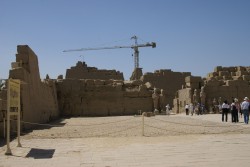
Figure 6. The Karnak Cachette, in the courtyard on the transverse axis was the repository of statues that had been buried for posterity.
As testimony to the power of religion in the thoughts and practices of the ancient Egyptians, consider the Karnak Cachette. In the courtyard on the transverse axis between the Third and the Seventh pylons, they buried more than 17,000 statuettes and about 750 large statues. It took two years (1903-05) to dig all this out (Figure 6). Or consider the pits at the Temple of Hatshepsut, in Deir el Bahari, Western Thebes, which were filled with hundreds of her statues by her stepson, Thutmose III, who sought to eradicate the very idea of having a female pharaoh. This was twenty years after her death — he did not do a traditional damnatio memoriae on her by destroying her birth name, so it was nothing personal, just political. But the statues had spiritual life in them, and so they deserved a proper burial.
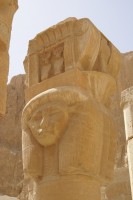
Figure 7. Like a human being, a deity had a ka (the life force and spiritual double) and a ba (the spiritual essence or personality) — and so did statues.
For human beings, the ka was their life force and spiritual double, and it was the ka that required food and drink in the tomb in order to be sustained through Eternity. (We will look at the ka and other aspects of being in Part 4.) Gods, too, had kas and bas, and so did statues. The statue held the essence (ba) of the god, and provided “a physical form (ka) in which the ba could reside so that human beings could communicate with it … Once filled with and enlivened by the ba of the god, the cult statue became the ka, or physical form, of the god.” (Teeter 2011, p. 44) (Figure 7).
Functions of the temple
A temple was not a place of worship for the common people, as we would think of it, but the residence of a god. Karnak was the temple of Amun, and also his wife Mut and son Khonsu, both of whom had their own temple precincts in the Karnak complex. Karnak also had side chapels for other gods. As we will see below, rituals and festivals constituted the religious functions and observances in the temple.
A major temple like Karnak served not only religious purposes but commercial and scholastic functions as well. Karnak was an enormous complex, sprawling over 200 acres; it was, and still is, the largest religious structure ever built, constructed during the New Kingdom and added to by pharaohs for many centuries thereafter. The temple administered a host of economic purposes — vast landholdings, agricultural production, livestock and fisheries, and workshops — primarily to serve the needs of the temple and its staff, which was enormous. Records in Papyrus Harris, from the reign of Ramesses III in the 20th Dynasty, showed that Karnak employed 81,300 people, controlled one-third of all the cultivatable land in Egypt and 65 villages, owned 433 orchards, tended 421,362 head of livestock, had 46 workshops, and operated 83 ships.
Students came to the temple school, called per ankh, the “House of Life,” to learn to read and write, and be prepared for careers as scribes, government officials and other positions of value to the state and open to the privileged class. The main thing taught was writing, which was the basis of management and accounting, but moreover writing and learning were first of all for communication with the gods. Hieroglyphic writing was medu-netjer, “the words of god,” so the priorities are clear: the religious purpose first, pragmatic applications second (Figure 8). Even so, the detail of written records like these, from Ostracon Gardiner 86, suggests that accounting was not far behind: “8,760 farmers, each responsible for producing 200 sacks of barley; a number of cowherds, each in charge of 500 animals; 13,080 goatherds; 22,530 bird keepers, each in charge of 34,230 birds; 3,920 donkey drivers, each with 870 animals; 13,227 mule drivers, each with 551 mules.” Karnak was the largest of the temples, but there were many others too that had colossal economic importance. Ramesses II’s cult temple, the Ramesseum in Western Thebes, for example, had a granary that could store 226,328 sacks of grain, enough to feed 3,400 families for a year. (Teeter 2011, pp. 37, 53)
Much of this may seem a departure from the religious, but let’s remember that the temple was first of all “the House of God,” and all of this activity was in support of its sacred function in a land where religion was not only paramount but all-encompassing.
Temple Rituals
Religion provided the effective means of preserving the order of the universe: ritual empowered by magic. “Like science, magic was an attempt to formulate principles through which the forces affecting man could be understood and manipulated.” (Mertz 2008, p. 207) Rituals, just like art and, especially, words, created reality and preserved order.

Figure 9. Unlike the residences and palaces of earthly life, built of mudbrick, ancient Egyptian temples and tombs were stone, and meant to last.
In a land so focused on religion as ancient Egypt was, the temples were rivaled in importance only by the tombs. Even the royal palaces were made of mudbrick — they were temporary and of this world. Temples and most of the tombs (i.e., those of the royalty, nobility, the privileged and well-heeled) were stone, and meant to last — they looked to the world beyond (Figure 9). “The temples were the dramatic settings for the performance of the rituals essential for the maintenance of the cosmos and formed the main dialogue between the realms of humans and god.” (Teeter 2011, p. 41) This was no small matter: there were 66 cultic acts in the daily routine. We shall be content with just the morning ritual, and briefly.
Each morning, the high priest entered the sanctuary of the god, broke the seal on the shrine and greeted the god’s statue: “May you awake in peace! The king is the one who sends me.” (Technically the pharaoh was supposed to do it, but in reality he delegated the job.) The priest then undressed the statue, bathed and perfumed it, reclothed it, applied makeup and ointments, and put it back in the shrine, which he again sealed. All this was accompanied by the burning of incense and a whole litany of ritual incantations, which had to be expressed in exactly the right order and using exactly the right words for the magic inherent in both word and ritual to become effective. When the priest left the sanctuary, he backed out, using a broom to sweep away his footprints as he went, so no trace of human intrusion could defile the home of god. (For a detailed treatment, one good source is Teeter’s Religion and Ritual in Ancient Egypt, Chapter 3.)
Also during this process, food and drink were left for the god to consume, but no one expected the god to do so physically. These offerings were left for a little while, as a symbolic gesture, and then distributed to the temple priests and staff as “reversion offerings” — whatever the god could not actually consume “reverted” to those who could. The god’s needs were spiritual, and had been met, not physically but essentially.
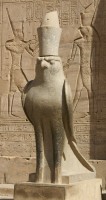
Figure 10. At the temple of Horus at Edfu, the god’s image was taken up the east staircase to the roof to be exposed to the sun in a rite of regeneration
The essence of the ritual was its reality. At the temple of Horus at Edfu, the god’s image was taken up the east staircase to the roof to be exposed to the sun in a rite of regeneration, and then back down the west staircase — a ritual procession symbolic of the diurnal path of the sun, reinvigorating Horus with the power of the sun god Ra. The ancient Egyptians did not regard the relationships of cause and effect as we would. To them ritual was a legitimate and powerful cause; ritual was real, and drew upon the reality of magic for its power (Figure 10).
Temple Priests
Let’s remember that as the living son of god (Sa Ra), the direct descendent of Horus and semi-divine in his own right, the pharaoh’s first duty was to preserve cosmic order (maat) on Earth. Therefore, delegating dealings with the god to the high priests gave them a great deal of power, and it should not be too difficult to guess that down the road, there could be problems with that. But we’re talking about religion here, not politics, so I will simply invite the curious to have a look at what happens when the priests of Amun rise to political power in Thebes.
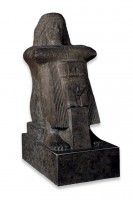
Figure 11. Ry, a High Priest of Amun during the reigns of Ramesses II, Merenptah and Sety II, holding a Hathor-headed sistrum. Copyright the British Museum.
Suffice it to say that the roles, and rolls, of priests and priestesses, especially in Thebes, were enormous. There were thousands, many of whom were involved in temple rituals of one kind or another, with access to parts of the temple as called for by their functions and consistent with their rank. There were all sorts of priests, from the simple hem netjer (“servant of god,” hemet netjer, priestess) on up to the high priest. Most were not educated in theology or involved in ritual, but all were involved in the temple’s operations, from the most practical levels — farmers, herders, fishermen, carpenters, weavers, potters, cooks, butchers — to functions requiring more formal education, such as stewards, teachers, administrators, accountants and scribes, and then the higher levels of full-time priests with strictly religious duties (Figure 11). Most worked at the temple on one-month rotations three times a year. They shared the reversion offerings of bread, beer, fruit and meat (a prized rarity) that were left over after the god had had his fill, and they were excused from some taxes and hard labor on public works projects, so as a part-time job, it had its perks.
Among the full-timers were the uab priests, “the Purified Ones” who observed strict rules of cleanliness, diet and dress in order to perform their rituals in a state of holiness; the “hour priests” who calculated the most auspicious times for festivals; the scholar priests who taught reading and writing in the temple school, per ankh, “the House of Life”; the lector priests (hery heb) who recited the spells and incantations that were essential to ritual, especially the all-important rites accompanying mummification and burial; and a whole group of funerary priests (hemu ka, “Ka servants”) including, among others, the chief embalmer (hery seshta, “he who controls the mysteries”), usually shown wearing an Anubis mask, and the sem priest, who presided at the interment and performed the Opening of the Mouth ceremony, dressed in a leopard skin. (For details about the priests, again a very thorough and the most recent resource is Teeter 2011, Chapter 2).
Women, too, had priestly roles in the temple. Chantresses sang and danced, and some played the sistrum (Egyptian seseshet, a hooped, metal rattle) (Figure 12), or the menat (a heavy noisemaker, believed to have sounded like the swish of rushing wind, although none has been found — the menat is known only from art). All this music and dancing was intended to arouse the energies of the god.
Ritual Creates Reality
There were 60 festival days a year at the time of Ramesses III (1184-1153, per Ian Shaw’s Oxford chronology). In just the first month (late July to early August) of the first season (Akhet, “the Inundation”) there were the Wag Festival of Osiris at Abydos, the Festival of the Great Departure of Osiris, the Festival of Thoth at Hermopolis, and Hathor’s Festival of Drunkenness at Dendera. (Fletcher 2009, p. 100 ff)
The year began on July 20, when Sirius (in Egyptian Sopdet, in Greek Sothis) reappeared after being hidden below the horizon for 70 days. As a consequence of the Egyptian calendar, which had twelve months of 30 days each (each month had three ten-day weeks), five days were left over at the end of the year, and were dealt with in the typically Egyptian way: explain them in myth. So these five “intercalary” days were celebrated as the birthdays of Osiris (Usir), Isis (Iset), Horus (Hor), Seth (Set) and Nephthys (Nebthet).
Any festival in ancient Egypt was essentially religious, even though it may not seem so pious to us. Take Hathor’s Festival of Drunkenness, for instance. Hathor was the goddess of love, kindness, music, feminine grace and other pleasant things, but when Ra got fed up with humankind he asked Hathor to wreak havoc. She assumed the character of Sekhmet, a ferocious lioness, and began tearing people to pieces, but then Ra thought better of it and wanted to stop her, but by this time Sekhmet was in such a frenzy that she could not be controlled. So Ra set out 7,000 jars of beer, dyed red to look like human blood in order to attract Sekhmet, and she got so drunk she couldn’t continue the massacre. The vicious Sekhmet reverted back to Hathor, goddess of all pleasurable things, and eventually they were both associated with Bastet, the sweet little black cat. What did the Egyptians do? They made Hathor the goddess of drunkenness and dedicated an annual festival to her, which was enormously popular.
The Opet Festival, in the second month of Akhet in Thebes (Uaset), was the main festival of the year in the New Kingdom, during which the image of Amun was carried from Karnak south about two kilometers to Luxor (Ipet Resyt, the “Southern Sanctuary”), where the god stopped for a month to reinvigorate both his divinity and the kingship by coupling with the pharaoh’s mother (symbolically, of course), and then returned to Karnak via the Nile. During the procession, the priests would stop periodically so people could ask the oracle questions. The sacred barque would then move in answer — tip forward for a “yes” or backward for a “no.” Also during the procession the priests would distribute bread and beer to the people, so all in all it was a great occasion, for gods and people both.
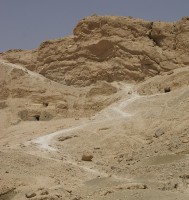
Figure 13. The Beautiful Festival of the Valley was a time to celebrate the eternal lives of dead loved ones with picnics at the family tombs.
The Beautiful Festival of the Valley, held in the third season, Shemu, “the Harvest,” between April and June, proceeded from Thebes across the river to the necropolis of Western Thebes, where people celebrated their dead family members and friends with picnics at the family tombs. The festivities included a lot of alcohol, so for a couple of days the cemeteries were raucous — which might not have entirely pleased Meretseger, “She Who Loves Silence,” the goddess of the necropolis who lived on the Theban Peak that dominates the Valley of the Kings, but no matter, it pleased the dead, and it especially pleased the living (Figure 13).
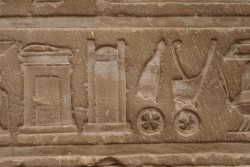
Figure 14. At the Heb-Sed Festival, celebrating the king’s 30th year of rule, the king alternately sat in two pavilions, the per wer shrine of Upper Egypt, with an angled roof, rounded on one end, and the round-topped per nu shrine of Lower Egypt, thus reconfirming the unity of the duality: the Unification of the Two Lands (Tawy).
The Heb-Sed (Jubilee) Festival, held (at least in theory) in the 30th year of the pharaoh’s reign and then every three years thereafter, involved ceremonial rituals, dancing, singing, pageants, and a foot race called “encompassing the field,” in which the king had to run between two pylons set out in the courtyard to show that he was still in good shape and fit to go on ruling. This festival was supposed to occur in the 30th year, but some kings jumped the gun and had it early — ritual was the same as reality, so just by enacting something, it became fact. By doing the Heb-Sed early, a king could validate his power to rule while he was still fresh. The festival was ultimately testimony that the king had done his duty: he had preserved order on Earth, and therefore the order of the universe (maat), and so he should remain ruler over the Two Lands. To emphasize the point, he alternately sat in two pavilions, the per wer shrine of Upper Egypt, with an angled roof, rounded on one end, and the round-topped per nu shrine of Lower Egypt, thus reconfirming the unity of the duality. This ritual action was performed in the 1st Dynasty and from then on, recalling the Unification of the Two Lands at the very beginning of pharaonic history (Figure 14).
Personal Piety
The common people could not go beyond the first courtyard of the temple, but they had other ways of practicing their religion. The Opet Festival gave them access to the god and the oracle. The Beautiful Festival of the Valley was a time to celebrate the continuing lives of their loved ones, who upon dying had become Osiris. The Festival of Drunkenness was supposed to put them in touch with the divine via alcohol-induced euphoria.
When there was no festival going on, they had other means of worship and connecting with the gods, whom they counted on to help and guide them in this life and the next. Prayers, practices, rituals and amulets protected them. In the main room of their tiny, four-room homes, they typically had a shrine in the most prominent place — right where we would put the TV. They named their children after gods and goddesses. “Theology” may have been beyond their grasp, but religious practice and personal meaning were central to their lives. Religion surrounded them. As I said in Part 1, religion was so central to the Egyptians that there was no need even to have a word for it; it simply was.
Whoever they meant when they said “god,” people were referring to a deity who meant something special to them then and there, a deity who was personal and directly involved in their affairs. And they had plenty to pick from. Altogether there were about 1,500 deities, most of them minor or local deities venerated in only a small area or a town and didn’t have cults of their own; some were supreme gods worshiped throughout Egypt, as we saw in Part 2; and many were protective deities with specifically defined interest (Figure 15).
If you asked an ancient Egyptian whom he or she worshiped, or prayed to, the answer would probably be pretty specific. An expecting mother might say Taureret, goddess of childbirth and maternity. A woman in labor might say Meskhenet, the goddess who stood beside a mother at the moment of childbirth and helped women in labor, or Reneret, who presided over a baby’s suckling and gave him his name. A farmer might say Heket, goddess of the grain before it germinated (Heket was also the goddess of midwives, and assisted every morning in the rebirth of the sun). Someone traveling in the desert or a husband who hoped to father a child might say Min, the protector of desert travelers and also the fertility god who ensured male potency. The man’s wife, wishing to do her part, might invoke Bes, god of the adornment of women.
Myths made the gods more understandable and personal in human minds by placing them in stories. Egyptian religion kept adding myths to explain belief and practice. A myth could be created as a basis for an existing ritual, instead of the other way around. Did this make it phoney? Not in the Egyptian mind. Wisdom came from understanding, so whatever the means of understanding might be, it was legitimate. The word rekh means “to learn.” The past tense of rekh means “to know.” If you learned something, you know it. How you learned it doesn’t really matter; that you know it does. Myths simply explained things that otherwise would have been unknowable.
Their devotion was profound. The earliest kings were buried in Abydos, in Upper Egypt, which was also the cult center and burial place of Osiris. Over a period of more than 2,000 years, pilgrims went to Abydos by the thousands and left more than eight million offerings, mostly pottery, at his tomb, which he shared with the 1st Dynasty king Djer. At the Temple of Amun in Karnak five million bouquets were left over a period of just three years.
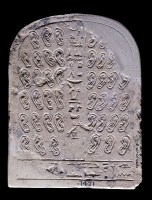
Figure 16. The common people inscribed their messages and requests on stone tablets, some of which had pictures of ears on them — the ears of the god whose attention was requested. These are called “Hearing Ear” stelae. Some temples had a Chapel of the Hearing Ear where devout commoners could bring their cares to god. Copyright The British Museum
Although the common people were denied access to the temples, they could leave their prayers and requests for the priests to carry inside. Or they could inscribe their messages and requests on stone tablets, called stelae, which look like gravestones. Some had pictures of ears on them — the ears of the god whose attention was requested. These are called “Hearing Ear” stelae. From the Middle Kingdom on (roughly 2000 BCE), temples had “chapels of the hearing ear” just outside the main temple wall, so people could get to them without entering the sacred compound (Figure 16).
If you go to Karnak, walk on past the crowds of tourists, few of whom venture past the columned halls, to the eastern end and you will find the Temple of Amun Who Hears Petitions and the Chapel of the Hearing Ear. You will probably be alone, and in the silence, let your mind listen to the echoes — the quiet petitions of the devout commoners who stood in that very spot thousands of years ago to bring their cares to god.
Next time, we’re going to look at the funerary practices that led to continuation of life in the world beyond.
Credits
All photographs by Brian Alm unless otherwise stated.
Figure 11. Granodiorite squatting figure of Ry, High Priest of Amun during the reigns of Ramesses II, Merenptah and Sety II, holding a Hathor-headed sistrum. AN13805001. Copyright British Museum.
Figure 15. Statue “Selket” (Serket) from the Tomb of Tutankhamun. In the Egytian Museum, Cairo. Photogeraph taken in 2002 by user Snofru (from Wikimedia Commons). Licensed under the Creative Commons Attribution-Share Alike 3.0 Unported license.
Figure 16. Limestone stela of Mahuia: a small, round-topped stela originally incised on its face with forty-four ears divided into six rows on each side of the stela, the top and bottom of which was comprised of three ears and the rest four ears. AN230188001. Copyright British Museum. Copyright British Museum.
References
Brewer, Douglas J, Emily Teeter. 2007, Egypt and the Egyptians, Cambridge U.P., Cambridge
Fletcher, Joann. 2009, The Egyptian Book of Living & Dying, Duncan Baird, London
Mertz, Barbara. 2008, Red Land, Black Land, William Morrow, New York
Shaw, Ian, ed. 2000, The Oxford History of Ancient Egypt, Oxford U.P., New York
Teeter, Emily. 2011, Religion and Ritual in Ancient Egypt, Cambridge U.P., Cambridge
A Short List of Additional Resources
Hagen, Rose-Marie and Rainer. 2002, Egypt: People, Gods, Pharaohs, Taschen, Cologne
Hornung, Eric. 1996 paperback edition, Conceptions of God in Ancient Egypt, Cornell U.P., Ithaca, N.Y.
Mertz, Barbara. 2007, Temples, Tombs & Hieroglyphs, William Morrow, New York
Traunecker, Claude. 2001, The Gods of Egypt, Cornell U.P., Ithaca, N.Y.
Wilkinson, Richard H. 2003, The Complete Gods and Goddesses of Ancient Egypt, Thames & Hudson, New York
Wilkinson, Toby. 2008, Dictionary of Ancient Egypt, Thames & Hudson, London
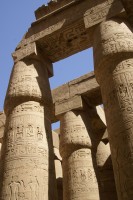
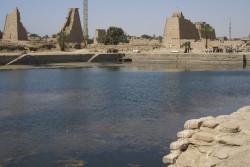
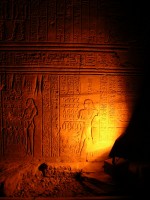
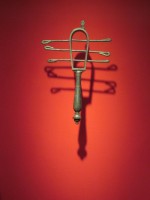

 By
By